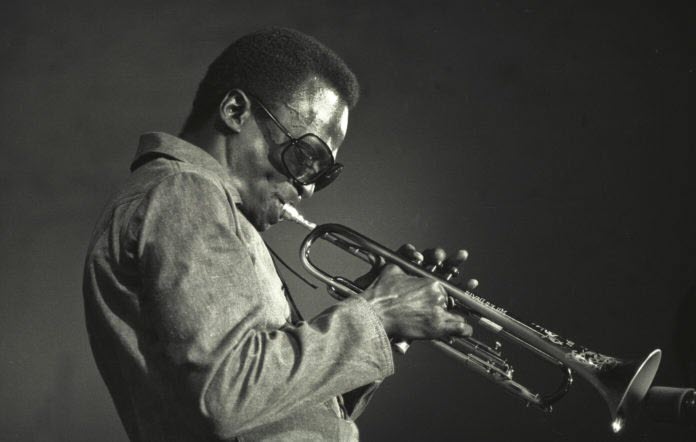Discover the Ultimate Playlist: 15 Timeless Jazz Songs You Need to Hear Now!
The realm of jazz is a rich tapestry woven with diverse melodies, complex harmonies, and spontaneous improvisation, offering a boundless array of sonic experiences. Within this vast landscape, the best jazz songs stand as timeless masterpieces that transcend musical boundaries and captivate audiences with their innovation, emotion, and virtuosity.
From the smoky clubs of New Orleans to the concert halls of New York City, jazz has evolved and flourished, embracing a myriad of styles and influences while remaining true to its roots. Whether it’s the soulful blues of Louis Armstrong’s trumpet, the bebop brilliance of Charlie Parker’s saxophone, or the avant-garde explorations of John Coltrane’s quartet, the best jazz songs showcase the creativity and ingenuity of the genre’s greatest artists.
With their infectious rhythms, inventive melodies, and spontaneous improvisation, these songs invite listeners on a journey of discovery, inviting them to explore new horizons and embrace the unexpected. Whether it’s the swinging rhythms of a big band, the intimate intimacy of a small combo, or the ethereal beauty of a solo piano, the best jazz songs transcend time and space, touching the hearts and souls of listeners around the world.
1. Take Five by The Dave Brubeck Quartet
“Take Five” by The Dave Brubeck Quartet is an iconic jazz composition that revolutionized the genre and became one of the most recognizable and beloved pieces of music in history. Released in 1959 as part of the album “Time Out,” the song showcases the innovative brilliance of pianist and bandleader Dave Brubeck, along with saxophonist Paul Desmond, bassist Eugene Wright, and drummer Joe Morello.
With its distinctive 5/4 time signature and infectious melody, “Take Five” captivates listeners from the opening notes, transporting them into a world of cool sophistication and rhythmic complexity. Brubeck’s masterful piano playing, combined with Desmond’s smooth saxophone lines, creates a mesmerizing interplay that showcases the quartet’s unparalleled musicianship and improvisational skill.
Beyond its musical appeal, “Take Five” has become a cultural touchstone, revered for its groundbreaking approach to jazz composition and its enduring influence on popular culture. The song’s catchy melody and innovative structure have been sampled, covered, and referenced in countless films, television shows, and advertisements, cementing its status as a timeless classic.
With its timeless appeal and lasting impact, “Take Five” remains a cornerstone of jazz music, celebrated for its artistic brilliance, technical sophistication, and groundbreaking contributions to the genre.
2. Sing Sing Sing by Benny Goodman
“Sing, Sing, Sing” is a jazz song written by Louis Prima and first recorded by his band in 1936. However, the most famous version of the song was recorded by Benny Goodman and his orchestra in 1937.
Benny Goodman’s rendition of “Sing, Sing, Sing” is a lively and energetic performance that features iconic solos by various members of his band, including drummer Gene Krupa. The song is characterized by its infectious swing rhythm, dynamic brass section, and memorable clarinet melodies played by Goodman himself.
“Sing, Sing, Sing” became one of Benny Goodman’s signature songs and a classic of the big band era. Its upbeat tempo and lively instrumentation made it a favorite among dancers and listeners alike, and it remains one of the most recognizable and beloved jazz standards of all time.
The song’s influence extends beyond the world of jazz; it has been featured in numerous films, television shows, and commercials over the years, and its memorable melody and infectious energy continue to captivate audiences around the world.
3. Take the ‘A’ Train by Duke Ellington
“Take the ‘A’ Train” by Duke Ellington is a timeless jazz standard that embodies the vibrant energy and sophistication of the swing era. Composed by Billy Strayhorn in 1939, the song became one of Duke Ellington’s signature tunes and a staple of the big band jazz repertoire.
With its lively tempo, infectious melody, and dynamic arrangements, “Take the ‘A’ Train” captures the excitement and rhythm of New York City life, particularly its subway system. The song’s title refers to the A train, one of the subway lines in Manhattan, and its lyrics evoke the hustle and bustle of urban travel.
Beyond its musical appeal, “Take the ‘A’ Train” is celebrated for its role in defining the sound of the Duke Ellington Orchestra and establishing Ellington as one of the preeminent bandleaders of the swing era. The song’s memorable melody and irresistible swing rhythm have made it a favorite among jazz musicians and audiences alike, earning it a permanent place in the jazz canon.
With its timeless charm and Ellington’s masterful arrangements, “Take the ‘A’ Train” remains a beloved classic in the jazz repertoire, celebrated for its infectious energy, sophisticated harmonies, and enduring influence on the genre.
4. So What by Miles Davis
“So What” is a jazz composition by the American jazz trumpeter and composer Miles Davis. It was recorded for his iconic album “Kind of Blue,” released in 1959.
“So What” is one of the most famous and influential jazz compositions of all time. It features a modal jazz structure, with a simple but memorable melody that is played in D Dorian mode. The song is characterized by its laid-back groove, cool atmosphere, and improvisational solos.
The composition is notable for its groundbreaking use of modal harmony, which was a departure from the more chord-based approach to jazz that had been prevalent up to that point. Davis and his bandmates, including saxophonist John Coltrane, pianist Bill Evans, and drummer Jimmy Cobb, explore the modal possibilities of the piece through their improvisations, creating a sense of freedom and exploration that was groundbreaking for its time.
“So What” is considered a classic of the jazz genre and a defining moment in Davis’s career. Its innovative approach to harmony and improvisation has inspired generations of musicians and continues to be studied and admired by jazz enthusiasts around the world.
5. Autumn Leaves by Joseph Kosma
“Autumn Leaves” is a timeless jazz standard with music composed by Joseph Kosma and lyrics by Jacques Prévert. Originally written in French as “Les Feuilles Mortes” in 1945, the song has been performed and recorded by numerous artists in various languages, becoming one of the most enduring and beloved compositions in the jazz repertoire.
With its melancholic melody and evocative lyrics, “Autumn Leaves” captures the bittersweet essence of the changing seasons and the passage of time. The song’s imagery of falling leaves, fading memories, and lost love resonates with listeners, evoking feelings of nostalgia, introspection, and longing.
Beyond its musical appeal, “Autumn Leaves” is celebrated for its harmonic sophistication and versatility, making it a favorite among jazz musicians for improvisation and interpretation. The song’s haunting melody and poignant lyrics have inspired countless interpretations, ranging from intimate ballads to spirited jazz renditions, each capturing a unique aspect of the song’s emotional depth.
With its timeless beauty and universal themes, “Autumn Leaves” continues to captivate audiences and inspire musicians, cementing its status as a classic in the jazz canon. Whether performed as an instrumental or with vocals, the song remains a poignant reminder of the fleeting beauty and poignant nostalgia of autumn.
6. Blue in Green by Miles Davis
“Blue in Green” is a jazz composition attributed to Miles Davis, although it’s disputed whether Davis or pianist Bill Evans wrote it. It was recorded for Davis’s landmark album “Kind of Blue,” released in 1959.
“Blue in Green” is characterized by its evocative and melancholic atmosphere. The piece features a slow tempo and a haunting melody played over lush, impressionistic harmonies. The composition showcases the talents of the musicians involved, including Davis on trumpet, Evans on piano, John Coltrane on tenor saxophone, and others.
The song’s title refers to the colors of the sky and the grass, evoking a sense of tranquility and introspection. “Blue in Green” is often praised for its emotional depth and the way it captures a mood of quiet contemplation.
Despite its relatively short length, “Blue in Green” has left a lasting impact on jazz music and has become a standard in the genre. Its beautiful melody and rich harmonic textures continue to inspire musicians and listeners alike, making it a timeless classic in the jazz repertoire.
7. Round Midnight by Thelonious Monk
“Round Midnight” by Thelonious Monk is a timeless jazz ballad that epitomizes Monk’s unique approach to composition and performance. Written in 1944, the song has become one of Monk’s most famous compositions and a beloved standard in the jazz repertoire.
With its haunting melody and melancholic atmosphere, “Round Midnight” captures the essence of late-night introspection and contemplation. The song’s evocative harmonies and emotional depth create a sense of longing and nostalgia, drawing listeners into a world of introspection and reflection.
Monk’s sparse piano accompaniment and distinctive chord voicings add to the song’s allure, creating a sense of mystery and intrigue. His improvisational style, characterized by angular melodies and unexpected rhythmic accents, further enhances the song’s emotional impact, leaving a lasting impression on listeners.
Beyond its musical appeal, “Round Midnight” is celebrated for its historical significance and cultural impact. Monk’s innovative approach to composition and improvisation helped to redefine the possibilities of jazz, inspiring generations of musicians and shaping the course of the genre for decades to come.
With its timeless beauty and Monk’s masterful performance, “Round Midnight” remains a cherished classic in the jazz repertoire, revered for its emotional depth, melodic richness, and enduring influence on the genre. Whether performed as an instrumental or with vocals, the song continues to captivate audiences and inspire musicians, cementing its status as a cornerstone of jazz music.
8. Songbird by Fleetwood Mac
“Songbird” by Fleetwood Mac is a poignant and heartfelt ballad that showcases the emotional depth and vulnerability of Stevie Nicks as a songwriter and performer. Released in 1977 as part of the iconic album “Rumours,” the song stands out for its simplicity, sincerity, and intimate acoustic arrangement.
With its gentle guitar chords and Nicks’s haunting vocals, “Songbird” creates a sense of intimacy and longing that resonates with listeners. The song’s tender lyrics express themes of love, longing, and vulnerability, as Nicks sings of finding solace and comfort in the arms of a loved one amidst life’s trials and tribulations.
Beyond its musical appeal, “Songbird” is celebrated for its raw emotion and authenticity, capturing a moment of vulnerability and introspection in Nicks’s life. The song’s stripped-down arrangement and heartfelt delivery stand in contrast to the more elaborate productions found on “Rumours,” highlighting Nicks’s talent as a songwriter and performer.
With its timeless beauty and emotional resonance, “Songbird” remains a cherished classic in the Fleetwood Mac discography, beloved by fans for its heartfelt lyrics, haunting melody, and Stevie Nicks’s soul-stirring performance.
9. Straight, No Chaser by Thelonious Monk
“Straight, No Chaser” by Thelonious Monk is a quintessential jazz composition that showcases Monk’s unique style, innovative harmonies, and distinctive piano playing. Released in 1951 as part of the album “Thelonious Monk Trio,” the song has since become one of Monk’s most famous and enduring compositions.
With its driving rhythm and bluesy melody, “Straight, No Chaser” captivates listeners from the opening notes, transporting them into Monk’s world of bebop and improvisation. The song’s catchy theme and infectious groove provide a solid foundation for Monk’s virtuosic piano solos, which are characterized by his unorthodox phrasing, angular melodies, and unexpected chord voicings.
Beyond its musical appeal, “Straight, No Chaser” is celebrated for its role in defining Monk’s distinctive approach to jazz composition and performance. The song’s rhythmic complexity, harmonic sophistication, and melodic inventiveness have made it a favorite among jazz musicians and aficionados, who admire its technical brilliance and artistic depth.
With its timeless appeal and Monk’s unparalleled talent, “Straight, No Chaser” remains a cornerstone of jazz music, celebrated for its innovation, creativity, and enduring influence on the genre. Whether performed as an instrumental or with lyrics, the song continues to captivate audiences and inspire musicians, cementing its status as a classic in the jazz canon.
10. Body and Soul by Coleman Hawkins
“Body and Soul” by Coleman Hawkins is a timeless jazz standard that exemplifies the artistry and emotional depth of the genre. Recorded in 1939, Hawkins’s rendition of “Body and Soul” is widely regarded as one of the most influential and iconic performances in jazz history.
With its lush melody and expressive improvisation, “Body and Soul” showcases Hawkins’s virtuosity on the tenor saxophone and his ability to convey a wide range of emotions through music. The song’s hauntingly beautiful melody and poignant lyrics evoke themes of love, longing, and introspection, resonating with listeners on a deeply emotional level.
Beyond its musical appeal, “Body and Soul” is celebrated for its historical significance and cultural impact. Hawkins’s innovative approach to improvisation and his bold reinterpretation of the song’s harmonic structure paved the way for future generations of jazz musicians, influencing the evolution of the genre for decades to come.
With its timeless beauty and Hawkins’s masterful performance, “Body and Soul” remains a cherished classic in the jazz repertoire, revered for its technical brilliance, emotional depth, and enduring influence on the genre. Whether performed as an instrumental or with vocals, the song continues to captivate audiences and inspire musicians, cementing its status as a cornerstone of jazz music.
11. A Night in Tunisia by Dizzy Gillespie
“A Night in Tunisia” by Dizzy Gillespie is a seminal jazz composition that exemplifies the bebop style and showcases Gillespie’s innovative approach to trumpet playing and composition. Written in 1942 during Gillespie’s time with the Earl Hines band, the song has since become one of the most famous and enduring standards in the jazz repertoire.
With its infectious rhythm, exotic harmonies, and dynamic melodies, “A Night in Tunisia” transports listeners to a world of excitement and adventure. The song’s evocative title and complex chord changes evoke the atmosphere of a bustling night in North Africa, while Gillespie’s virtuosic trumpet solos add an element of improvisational brilliance to the piece.
Beyond its musical appeal, “A Night in Tunisia” is celebrated for its historical significance and cultural impact. Gillespie’s groundbreaking composition and innovative use of Afro-Cuban rhythms helped to redefine the possibilities of jazz, influencing generations of musicians and paving the way for the development of new styles and genres.
With its timeless beauty and Gillespie’s masterful performance, “A Night in Tunisia” remains a beloved classic in the jazz canon, revered for its technical brilliance, improvisational prowess, and enduring influence on the genre. Whether performed as an instrumental or with vocals, the song continues to captivate audiences and inspire musicians, cementing its status as a cornerstone of jazz music.
12. Four by Miles Davis
“Four” by Miles Davis is a classic jazz composition that exemplifies Davis’s mastery as a bandleader, composer, and trumpet player. Recorded in 1954 for the album “Walkin’,” the song features Davis alongside a stellar lineup of musicians, including Horace Silver on piano, Percy Heath on bass, and Kenny Clarke on drums.
With its catchy melody and infectious groove, “Four” captivates listeners from the opening notes, drawing them into a world of rhythmic complexity and harmonic sophistication. The song’s bebop-inspired chord changes and swinging rhythm provide the perfect backdrop for Davis’s lyrical trumpet lines, which showcase his impeccable sense of phrasing, tone, and dynamics.
Beyond its musical appeal, “Four” is celebrated for its historical significance and cultural impact. Davis’s innovative approach to improvisation and his ability to blend traditional jazz elements with modern techniques helped to redefine the possibilities of the genre, influencing generations of musicians and shaping the course of jazz history.
With its timeless beauty and Davis’s masterful performance, “Four” remains a cherished classic in the jazz repertoire, revered for its technical brilliance, melodic inventiveness, and enduring influence on the genre. Whether performed as an instrumental or with vocals, the song continues to captivate audiences and inspire musicians, cementing its status as a cornerstone of jazz music.
13. Giant Steps by John Coltrane
“Giant Steps” by John Coltrane is a groundbreaking jazz composition that showcases Coltrane’s virtuosity, harmonic innovation, and improvisational brilliance. Recorded in 1959 for the album of the same name, the song is known for its complex chord changes and rapid tempo, challenging both musicians and listeners alike.
With its distinctive chord progression and frenetic pace, “Giant Steps” immediately grabs the listener’s attention, drawing them into a whirlwind of musical complexity and excitement. The song’s intricate melody and shifting harmonies provide the perfect canvas for Coltrane and his bandmates to showcase their improvisational prowess, pushing the boundaries of traditional jazz and exploring new realms of musical expression.
Beyond its musical appeal, “Giant Steps” is celebrated for its historical significance and cultural impact. Coltrane’s innovative approach to composition and improvisation helped to redefine the possibilities of jazz, inspiring generations of musicians and shaping the course of the genre for decades to come.
With its timeless beauty and Coltrane’s masterful performance, “Giant Steps” remains a beloved classic in the jazz repertoire, revered for its technical brilliance, harmonic complexity, and enduring influence on the genre. Whether performed as an instrumental or with vocals, the song continues to captivate audiences and inspire musicians, cementing its status as a cornerstone of jazz music.
14. West End Blues by Louis Armstrong
“West End Blues” by Louis Armstrong is a seminal jazz recording that stands as a masterpiece of early jazz and a testament to Armstrong’s genius as a musician and performer. Recorded in 1928 with his Hot Five







